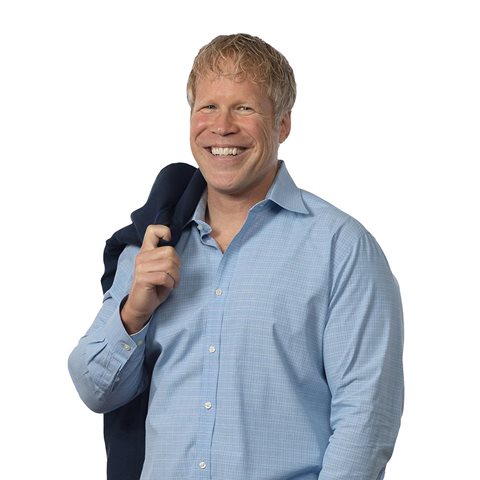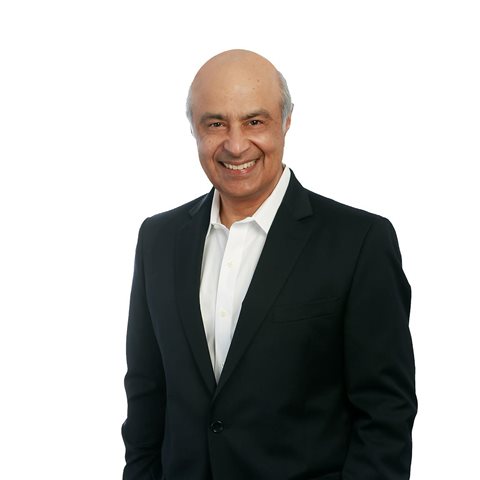The greatness of our lives is not in what we leave behind, but in what we send forward.
One of the most exciting athletic events in the Summer Olympics is the 4x100-meter relay race. The event, which was inspired by ancient Greek couriers handing off a “message stick” to one another, was introduced at the Stockholm Olympics in 1912. For the entirety of the 20th century, the United States team dominated the sport. Not once in the 21st century, however, has the US team brought home a gold medal, despite many of its members having done so in their individual events.
What’s the problem? Simple: bad handoffs. Consider New York magazine’s description of one such handoff at the 2020 Tokyo Olympics: “As the pair attempted to pass the baton, they looked more like Keystone Cops than two of the five fastest men in the world.”1 As a result, the team failed to even advance to the final. On the other hand, when well-synchronized handoffs happen, relay times are typically two to three seconds faster than the sum of the best times of individual runners.
When you’re a celebrated CEO who has successfully led a company through multiple cycles of performance improvement, it’s hard to imagine looking like a Keystone Cop at the end of your career as you pass the baton. Yet, as the transition gets closer, the reality that you’ve never actually done a CEO handover before can feel daunting. Unlike Olympic athletes who practice the timing, pacing, technique, and communication over and over with the grandstands empty—you’ll only have one very public shot at it, and you’ll be doing so while under emotional strain. As Caterpillar’s former CEO Jim Owens puts it: “In the end, the hardest part of the CEO role is leaving.”
The best CEOs are less worried about how their own reputation might fare in the transition, and more focused on how the change will impact the institution moving forward. Like track and field, the goal of the handover is to ensure the next person gets off to a great start and is well positioned to perform even better after the baton is handed off. Dropped batons, on the other hand, come at a huge cost. Poorly managed CEO and C-suite transitions wipe out close to $1 trillion in market value every year in S&P 1500 companies.2
Microsoft CEO Satya Nadella stresses the importance of taking an institutional view of transitions: “My dad, a civil servant in India, always used to talk about institution builders as those people whose successors do better than they did themselves. I love that definition. I feel that if the next CEO of Microsoft can be even more successful than I am, then maybe I’ve done my job right. If the next CEO of Microsoft crashes and burns, that may result in a different verdict.”
While the specifics of every transition differ depending on the circumstances, any CEO who’s excelled in the role but now senses it’s time to start thinking about the endgame will benefit from four best practices:
- Firmly decide when to go.
- Finish the job of preparing successors.
- Hand over gracefully.
- Embrace what’s next.
Firmly decide when to go
Some CEOs enter the job with a clear idea of how long they want to stay, as was the case with former Cincinnati Children’s Hospital Medical Center (CCHMC) CEO Michael Fisher. “When I started the role, I told the board that if I’m healthy and stakeholders think I’m doing a good job, I’ll do this for, give or take, ten years.” In Fisher’s case, he ended up staying almost 12, which is just over the 11.2 years the highest-performing CEOs on average spend in the role. For all large-company CEOs, tenures are far shorter: just 7.3 years.3
Getting the timing right for your departure is vital. Like fine wine, you’ll have become better at your role with time and experience—but at some point, there will be an inevitable decline. There are many warning signs that this has happened to a CEO. On one end of the spectrum, it’s when the desire to protect their reputation of making quarterly numbers causes them to shy away from making bold moves and investments in the future. On the other end, it’s when late-tenured CEOs whose strategies have played out become desperate to avoid a growth slowdown and opt to make large, complex acquisitions that are unlikely to be accretive for the institution. Beneath such moves often lurks a selfish desire to sooth increasing anxiety, unrest, and potentially even boredom in the role.
The best chief executives know that there’s no place for ego in determining when to go; what matters is what’s best for the institution. Often there’s a natural need for the company to pivot in a new direction, but the sitting CEO isn’t the best one equipped to lead the transition. Gail Kelly chose to leave the Australian bank Westpac when she felt her customer-centric strategy was well in place and she had a successor ready who would be better suited to lead the company into a more digital future. Sony’s Kazuo Hirai felt that while he was the right person for the transformation phase of the company, he was less suited for the more stable phase to follow.
While the experience of others is instructive, knowing when to step down is a very personal, and difficult, decision. “It’s hard to know when the right time to leave is,” shares former Goldman Sachs CEO Lloyd Blankfein. “When times are tougher, you can’t leave. And when times are better, you don’t want to leave.”4 Former Medtronic CEO and now Harvard Business School executive fellow Bill George taught classes that focused on the arc of a CEO’s tenure. He suggests CEOs regularly ask themselves the following litmus test questions to know when the time is right5:
- Do you still find fulfillment and joy?
- Are you continuing to learn and feel challenged?
- Are there new personal circumstances that you should be taking into account (for example, family or personal-health issues)?
- Are there unique opportunities outside that won’t come around again?
- How is succession shaping up? (Is more time needed to prepare someone? Are you blocking someone who can lead the next era?)
- Are there company-specific milestones that make transitioning out more or less natural (such as the integration of a major acquisition, the launch of an important new product, or the completion of a long-running project)?
- Is the industry changing so dramatically that the company would benefit from a new perspective?
- Are you staying primarily because you can’t imagine what comes next?
With these considerations in mind, the best CEOs clarify their time frames with their board well in advance of their planned departure date and commit. “Without a clear timetable,” says Harvard’s George, “grooming internal successors and following an orderly succession process become challenging.”6 Typically, the lead time given is at least two years.
Ultimately, the adage, “It’s always better to drink wine a year early rather than a day too late,” also applies to CEO succession. As former Intuit CEO Brad Smith explains: “I had friends who stayed a couple of years too long in the job. I thought to myself, ‘My gosh, how could they not have seen this coming?’ Then I thought about all the athletes that stay one or two years past their prime. And you think, ‘Man, I don’t want to be that.’ The only question you have to ask yourself is if you want to be the one choosing the date, or you want someone else to choose it for you.”

CEO Excellence
The six mindsets that distinguish the best leaders from the rest.
Finish the job of preparing successors
In a successful relay, the person receiving the baton starts running well before the baton reaches them. The same can be said for succession planning. Although the job of hiring and firing the CEO ultimately rests with the board, the best chief executives work with their directors on succession planning throughout their tenure to ensure there are runners who have the momentum to receive the handoff. Intuit’s Smith describes this philosophy: “Bill Campbell [Intuit’s chair and coach to many Silicon Valley CEOs] helped me,” he says. “The first day I was in the job as CEO he said, ‘I want you not to think of succession planning as replacing yourself. I want you to think about it as leadership development of your team. And we’re OK if we groom CEOs, and you’re not ready to leave or we don’t want you to leave, and they go someplace else. Because then Intuit will simply be known as a leadership factory.’”
Heeding this advice, Smith gave a verbal update on his succession plan to his board every quarter during his tenure, and once a year there would be an official succession planning session facilitated by an outside consulting firm. In this session, the criteria for the next CEO were updated as the company’s needs changed, or as the markets shifted. The board also formally reviewed the pipeline of both internal and external candidates. Smith concludes, “Ultimately, we talked about succession 44 times in my 11 years before the board had to make the decision, and that ensured there were no surprises such as: ‘You think you groomed a successor; we don’t agree.’”
It also pays to get your head of human resources intimately involved in this process. At Singaporean multinational banking and financial services corporation, DBS Bank, for example, CEO Piyush Gupta says, “For every job, mine included, we [my head of HR and I] work through what is the slate, who could do the job soon, who could do the job in three or five years. We then case manage 100-odd people. Who needs to move, where should we move them, how do we get them the exposure and growth they need to get from point A to point B. It’s very well structured.”
When it comes time for a transition, if you’ve engaged your board and head of human resources the way Smith and Gupta did, the board will have clarity on both what attributes are needed and who the best internal candidates are. Caterpillar’s Owens puts it starkly: “At any large company, shame on them if they don’t have at least three strong candidates to take over the top job.” Westpac’s Kelly adds nuance: “My style was to try to develop all of my executives. I always knew that two or three of them would pop out as the most natural successors.”
If the process isn’t well managed, succession planning can lead to unpleasant cultural dynamics. “You might not intend to set up a horse race, but it inevitably becomes one,” Kelly observes. There are ways to mitigate office politics, however. Kelly’s approach was straightforward: “I had an explicit conversation with the candidates who were in the running to let them know their behavior would be watched,” she says. “I was clear with them: ‘You can’t allow your teams to play politics in any shape or form, and neither can you. You must support every member of the team to be the best they can be.’ That worked superbly well.” Kelly adds: “I also had to treat them equally, not playing any favorites, and they trusted I would.” It’s also important not to make any promises to candidates during the process. Ultimately, the decision belongs to the board.
So what does the endgame of succession planning look like? Caterpillar’s Owens shares his approach: “The board should be able to evaluate the candidate, so I gave these individuals more autonomy toward the end and let them give more strategy presentations to the board. I also had each candidate present to the investor community on the strategy for their units.” In some cases, it also makes sense to move potential successors into new roles to further elevate their profile in the lead up to a passing of the baton. It’s important to keep in mind that doing so too late in the race can do more harm than good, because in all likelihood there’s not enough time for a leader to establish themselves and excel in a new role. In the last year or two of a CEO’s tenure, it’s better to develop candidates by involving them in enterprise-level projects, committees, and coaching programs.
The CEO’s role in succession planning ends once they’ve helped the board determine the right criteria and develop a list of internal candidates. It’s then up to the board to interview candidates and involve outside parties in the decision (for instance, headhunting firms, interview panels that include sitting executives). Former Ecolab CEO Doug Baker describes how he dealt with his board having the last word: “I didn’t want to taint the process. I could live with whatever the final decision was, and I’d fully back it because ultimately it has to be the board’s choice. It was how I felt intellectually, and it would have been how I behaved no matter what. Emotionally, of course, I wanted it to be my choice. I mean, we’re human.”
The “finish the job” notion, of course, doesn’t just apply to succession planning. We’ve seen some CEOs take their foot off the gas once they’ve decided that it’s time to go. Given that the time between notifying the board of your intention to leave and when they’ll name your successor is a matter of years, the institution can lose some of its competitive edge if the sitting CEO doesn’t stay focused to the very end. It may sound obvious, but as former Cadence Design Systems CEO Lip-Bu Tan shares, “A lot of temptations can derail you; you have to stay focused on the things that really matter.”
Hand over gracefully
Once a successor is chosen by the board, it’s time to make the actual handoff happen. In track and field, success means passing the baton to the next runner in such a way that they can easily grasp it and take it forward rapidly without letting it drop. Successful CEO handovers have similar attributes.
Let’s start with how you can make the baton easy to grasp. The first thing you’ll need to do is explain to the new CEO that they don’t need to be you—that the board chose them because of their own special skills and attributes and because they are the best fit for the institutional road ahead. Before Intuit’s Smith stepped down as CEO, he and his successor, Sasan Goodarzi, talked to Steve Young, the American football player who replaced iconic quarterback Joe Montana. “He talked to us about how for part of his first year he tried to be Joe Montana,” Smith recounts. “He grew his hair out like Joe and began to dress like Joe. He even tried to change his throwing mechanics like Joe. And he had the worst half year ever. Eventually, Steve stopped trying to be like Joe and had a great career. Steve looked right at Sasan and said, ‘You need to be the best Sasan Goodarzi in the world.’ He looked at me and said, ‘And you have to let him be the best Sasan Goodarzi in the world.’”
Another way you can make things easier for your successor is to give them the gift of resolving any unpleasant yet institutionally important decisions before the handoff. “You’ll have some unassailable capital as a successful outgoing CEO,” explains CCHMC’s Fisher. “Use it to address some of the lingering tough issues, be they people issues or otherwise, so that your successor doesn’t have any messes to clean up.” At the same time, Fisher advises not to go too far. “If there are important strategic hires and/or strategic decisions to be made, if at all possible, let your successor get their fingerprints on those decisions; they’ll be the ones living with them.”
You want your successor to move forward rapidly, but too fast a handoff could create instability and too slow could mean you’re getting in the way. In track and field, handoffs happen in the 20-meter “exchange zone,” inside which the next runner must receive the baton from the current runner. The exchange zone for a CEO transition is typically six to nine months and sequenced in three stages:
- Stage one: Once your successor is announced, you will still largely run the company for two to three months to give them time to do their listening tour and sharpen their thoughts on how they want to run the company. During this time, you’ll also give them full exposure to what the role entails, share the rationale behind past decisions, discuss strengths and weaknesses of the top team and the organization at large, and warmly hand off important stakeholder relationships (for example, large customers, investors, regulators, suppliers, and community leaders). This is also when you can offer them some “live, with a safety net” learning opportunities (roles in senior staff meetings, town halls, board meetings, etcetera) so they can get a good feel for what it means to sit in the driver’s seat.
- Stage two: In the two to three months leading up to their formal start date, you become copilots. During this time, as Intuit’s Smith describes, “Any decision that impacts the next few months, the sitting CEO will take. If it’s got longer-term implications that the successor will have to live with—such as a restructure or major engineering effort—they’ll take it.” In this stage, it’s important that you shift from a teaching and enabling stance to a supporting one. More than anything, you are encouraging your followers to accept and embrace their new leader.
- Stage three: After the formal start date, all decision making is transferred to your successor, and your job is simply to be available for counsel or practical support as directed by them. This typically involves moving your office to a new location away from headquarters. This is also a time when you should let yourself and your career be celebrated—not out of vanity, but because of how important such closure is for others both individually and institutionally. “Over my last 60 days in the role, I went to virtually every significant area of the medical center,” recounts CCHMC’s Fisher. “It was a chance for me to thank them and for them to reminisce with me, and it was such important closure for all of us.”
Before you start the handoff, it’s important to have an explicit up-front conversation with your successor to jointly shape the approach and how decision making will shift over time, and to create a concrete plan for how the handoff process will work. It’s also important to be explicit about what happens after stage three.
In many companies, the outgoing CEO is asked to take on an executive chairman role. The idea is well intentioned: keep the experience of the former CEO and combine it with the fresh ideas and vigor of the new CEO. In practice, staying around is generally not a good idea. After all, the advice to new CEOs is to reframe what winning looks like, make bold moves early and often, and dynamically reallocate resources, all of which run counter to the inertia created by having the old guard still in a leadership role. Research backs this notion: a new CEO’s early dismissal is 2.4 times more likely when the outgoing CEO remains the board chair. The Wall Street Journal memorably drove home the point in saying, “Imagine if the former president moved out of the Oval Office but still lived in the White House.”7
“You really need to get out of the way,” suggests Caterpillar’s Owens, “and let your successor critique what you did and talk about what needs to go way better.” Intuit’s Smith concurs: “The last step is to celebrate your successor’s success,” he says. “There’s nothing worse than the Ghost of Christmas Past commenting on whether a leader is doing everything the way they should.” Smith holds this view despite having successfully played the executive chairman role at Intuit. “Honestly, in hindsight, I should have just stepped away,” he says. “That’s not because we had any dynamic tension. I simply think it’s better to exit, and let the CEO do their thing.”
This isn’t to say that there aren’t some situations that warrant exceptions to this line of thinking. For example, where the board has skipped over a leadership generation to advance a talented but “green” up-and-comer for the role. Or where the incumbent CEO has been deeply involved in a not-yet-completed acquisition or integration.
Embrace what’s next
Stepping down from a powerful job can be very difficult. As former US President Harry Truman said, shortly after leaving office, “Two hours ago I could have said five words and been quoted in every capital of the world. Now I could talk for two hours, and nobody would give a damn.”8 Westpac’s Kelly highlights the emotional impact of having to move on. “For a lot of people, it’s ‘I am what I do, and I do my job,’ and that’s where their relevance and purpose come from,” she observes. “That’s really hard to leave.” Former Xerox CEO Anne Mulcahy shares an additional challenge she faced: “By the time you are at retirement age,” she exclaims, “your kids have left home too. It’s double retirement.”9
We advise CEOs to acknowledge, directly confront, and overcome the basic human fears and needs that arise when stepping down. These include losing the relevance, power, attention, and admiration that come with the job, as well as the prospect of spending time at home with a partner who has established their own rhythms and independent priorities. Add into the mix the term “retirement,” which to some implies that the ravages of age and physical decline are accelerating—all of which can be mentally and emotionally difficult to embrace.
While transitions can be traumatic, that stress is more than counterbalanced by the feeling of liberation that stepping down brings. “As CEO, you were a prisoner of the quarterly earnings because you had to deliver,” former PepsiCo CEO Indra Nooyi observes. “Now that I am retired, I can put whatever pressure I want on myself, but I’m not a prisoner [anymore]. I can pick and choose what I want to do.”10
As Nooyi suggests, any sense of loss is typically short lived, as it becomes clear that life can be even more vibrant, interesting, and fulfilling when you are freed of the constraints of the corporate calendar. You can invest more in personal relationships and use your experience to make a difference in many spheres. “A good time to step down,” shares former ICICI Bank CEO K. V. Kamath, “is when you see you can do a lot more exciting things outside than you sense you can do within the organization.”
The best CEOs don’t just confront their emotions, they also plan how to avoid what Ken Chenault, former CEO of American Express, describes as “falling into the abyss.” “Don’t ignore it. It is very important to be thoughtful [about life after being the CEO],” he recommends. Practically speaking, that means that before leaving the role, you should identify what’s important to you. In Chenault’s case, even though he didn’t know precisely what he’d be doing, he says, “When opportunities came my way, I was ready, because I had thought about them.”11
Following Chenault’s advice to identify what’s important to you, Intuit’s Smith reflected on what he was going to miss about his role as CEO. “I was going to miss the jersey that made me part of a team, the opportunities to develop the next generation of leaders, and I was going to miss having a scoreboard to measure success by,” he reveals. “Then I put my energy not in what I was leaving behind, but in what the next thing could be that would have those characteristics. I was running toward something rather than walking away from something.”
Whatever your interests, as a successful former CEO you will be able to find ample opportunities in your new life. For those of a certain age, being CEO of another company may be in the cards. Others may want to simply retire to a quieter life focused on family, friends, and leisure. Between those bookends, however, are myriad options: adviser, investor, board member, entrepreneur, politician, public servant, philanthropist, teacher, and so on. In Smith’s case, he became the president of Marshall University in his home state of West Virginia. “Now I wake up every morning wearing a jersey, helping the next generation, and knowing from the scoreboard if we’re moving the ball forward,” he beams. “I’m 100 percent in.”
For most, the path to the next act will start with some experimentation, the seeds for which can be planted before stepping out of the CEO role. “I wanted to start with a portfolio of activities,” CCHMC’s Fisher explains, “so I started putting some pieces in place—a little bit of business, a little bit of civic and philanthropic work, and some plans with family—so that when I finished, I’d have some ways to contribute, even if it wasn’t a full slate.”
Fisher’s last statement is vital—it’s important to keep in mind the first opportunities that come your way may not be the best ones, and it’s easy for your life to feel fragmented by too many smaller commitments made for fear of not keeping busy. As PepsiCo’s Nooyi admitted shortly after she stepped down from the top job, “I’m overcommitted because I just didn’t know how to say no.”12 It typically takes up to a year of experimenting with a targeted portfolio before it becomes clear where you should formalize bigger, longer-term commitments to new opportunities.
If you have a significant other, the exploration of what’s important to you and the shaping of your post-CEO portfolio is something best done together. Doing so creates a deeper connection in the near term and helps mitigate frustrations down the road. If they’ve been waiting patiently for you to retire so you can travel the world together and that’s not something on your radar, it’s important to have those conversations up front. A third party can sometimes be helpful in facilitating such conversations. Medtronic’s George reports, “My wife, Penny, and I met with a counselor six months before I left Medtronic to discuss those issues, and we were able to address the different stages we were at in our careers.”13
Ultimately, being CEO is just one chapter in the story of your life. As you embark on the next chapter, the adage that “failing to plan is planning to fail” applies. At the same time, it’s wise not to hold too tightly to such plans, as though they were a corporate transformation project. Be open to serendipity, knowing that the most exciting opportunities will sometimes come from the most unexpected sources. Also remember that the traits of continuous learning, boldness, authenticity, and service leadership that have underpinned success in the previous chapters of your life will continue to serve you well.
Great CEOs ultimately see themselves as part of an ongoing institutional relay race where each generation of leadership hands to the next generation something better than they were themselves handed. By leaving at the right time, for the right reasons, ensuring a clean handoff to your successor, and knowing where you’ll run to next, you’ll achieve a gold-medal-worthy finish to your CEO tenure.






